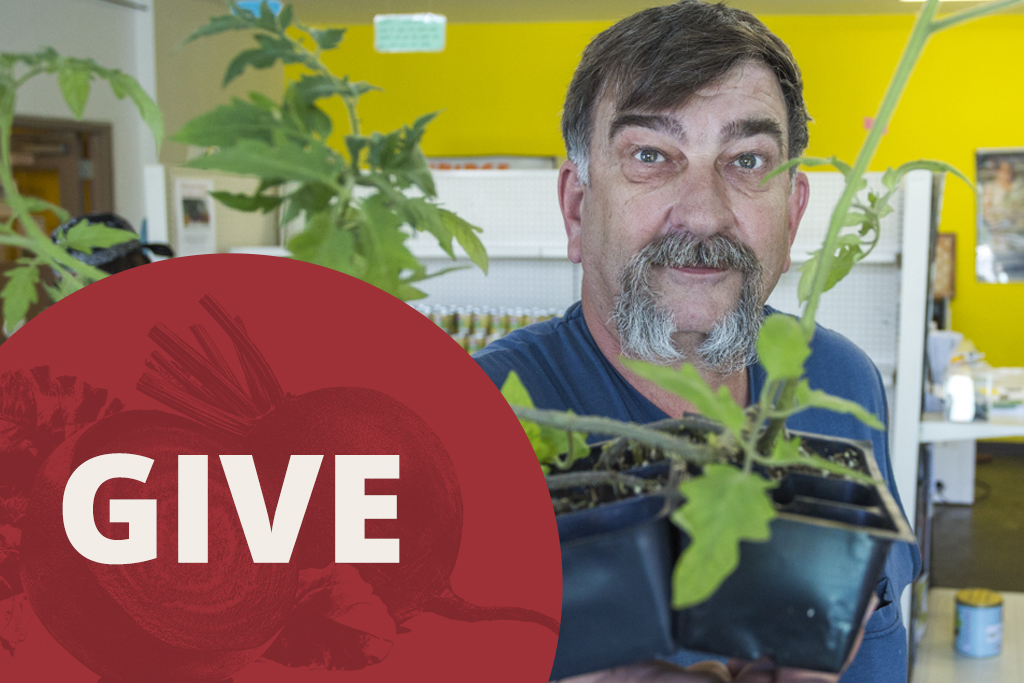Learn

As we strive for a world without hunger, we know we must also address climate change and the threat it poses to our planet and its peoples. Tackling hunger and climate change go hand in hand, and this work starts with reimagining our food and farm system.
![]()
Industrial agriculture has so many negative impacts on people and our environment. It is a major contributor to greenhouse gas emissions and global warming, increasing temperatures and severe weather that endanger farms and food access. On top of that, industrial food production weakens the soil over time, pollutes our air and water, and introduces dangerous toxic chemicals into our food. The numbers tell an alarming story:
- 35% of all greenhouse gas emissions are produced by industrial agriculture
- 70% of the planet’s fresh water is lost to industrial agriculture
- Annually, over $2 billion is spent on cleaning up drinking water contamination caused by fertilizer runoff each year.
- Approximately 27 football fields of land are bulldozed worldwide every minute to create more room for farmed animals.
- More than 10 million acres of land destroyed annually through industrial agriculture
![]()
While our environment suffers from the destruction caused by industrial agriculture, people around the world are also impacted. Despite Big Ag’s large-scale food production, this food isn’t affordable or accessible to much of the world’s population, and when it is, it often lacks nutritional value. Industrial food production also relies on the labor of farm and food chain workers who are disproportionately BIPOC, underpaid, regularly exposed to toxic agrochemicals and harsh working conditions, and often experiencing hunger themselves.
- Worldwide, 1/3 of all food produced through industrial agriculture goes to waste, 1.3 billion tons annually.
- 86% of farm and food workers report wages that are low, at the poverty level, and below the poverty level.
- BIPOC farmers in the US earn far less than white farmers on average, with Black farmers earning just $2,408 compared to the $17,190 earned by white farmers. In fact, Black farmers in the U.S. have lost more than 90% of their land since the 1900s.
![]()
We’ve talked a lot about industrial agriculture and the harm it causes to the environment and people; but this kind of large-scale agriculture isn’t __ the only way to produce food. WhyHunger’s “Summer’s Heating Up!” campaign spotlights equitable, community-led approaches to food production that actually nourish people and heal our planet. So, let’s talk about agroecology.
Agroecology works with nature to produce healthy and nutritious food.It’s a form of agriculture that marries modern science with indigenous knowledge and the wisdom of those who work with the land. But it’s also so much more than sustainable farm practices; it’s a way of life. A way for families and communities to build independence from the industrial food system, so they can determine for themselves when and what they eat, and a way to engage socially and politically to protect access to land and resources, and advocate for policies that support sustainable production of healthy food.
Agroecology is not top-down; it’s spread farmer-to-farmer and community-to-community in a horizontal learning and scaling model that puts those most impacted in control. Already practiced worldwide, agroecology is proven to reduce hunger, create economic stability, cool the planet, and strengthen democratic engagement.
If it sounds hard to define, that’s because it looks different for different people, and in different places. The best way to produce nutritious food while working sustainably with the land in Maine is different than in the Yucatan, or in Zimbabwe. But no matter where it’s being practiced, the advantages of agroecology remain true:
- Agroecological farmers diversify indigenous species and habitats which increases the number of crops per acre, producing more food on less land and using less energy and water in the process.
- It’s good for the earth in so many ways! Unlike large scale monoculture farming, which depletes the soil over time, agroecological practices work in harmony with the land through a diversity of plant and animal cultivation that is natural to that environment.
- Agroecology creates farms that are better equipped to withstand stress and climate events, while minimizing crop loss and promoting nutritious diversity in our diets.
By centering small-scale and agroecological farms and moving away from a wasteful and inequitable industrial agriculture system, we can counter the impacts of climate change and feed the planet. If you’d like to learn more about agroecology, we encourage you to check out some of these publications:
- Read more about perspectives and stories from agroecological farmers in WhyHunger’s agroecology publication.
- Learn more about the people and movements fighting for food sovereignty in the US Food Sovereignty Alliance’s (USFSA) report.
And read about Black land loss and Black agroecological farmers in the Southeastern African American Farmers Organic Network (SAAFON)’s publication: Growing the Legacy: Stewarding a Black Agrarian Revival in the Rural South



